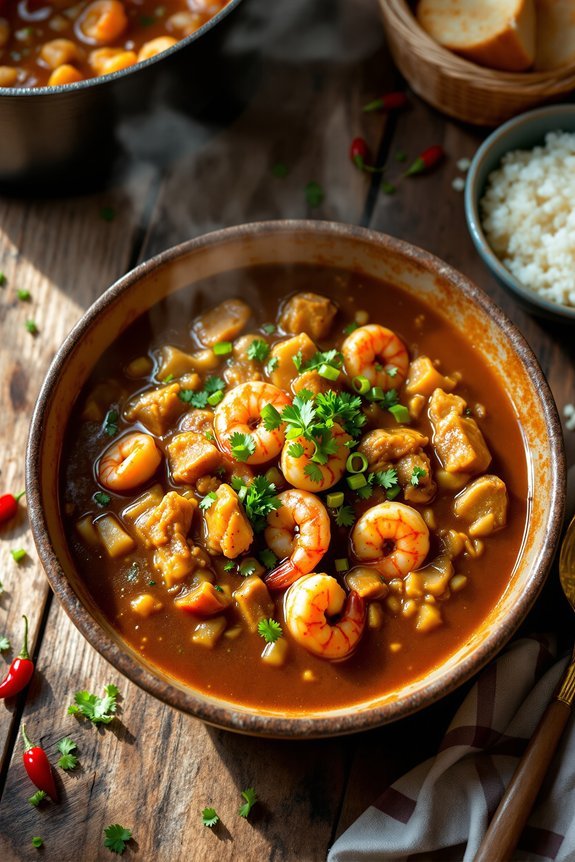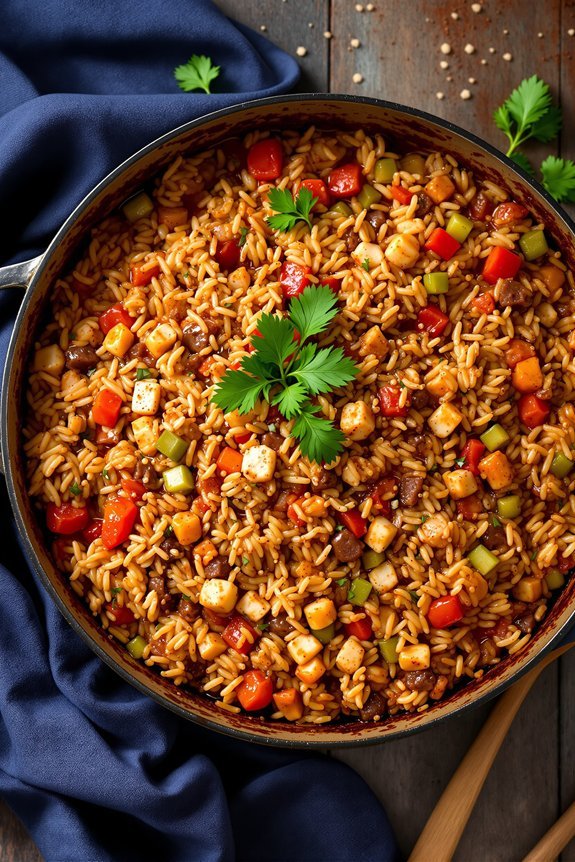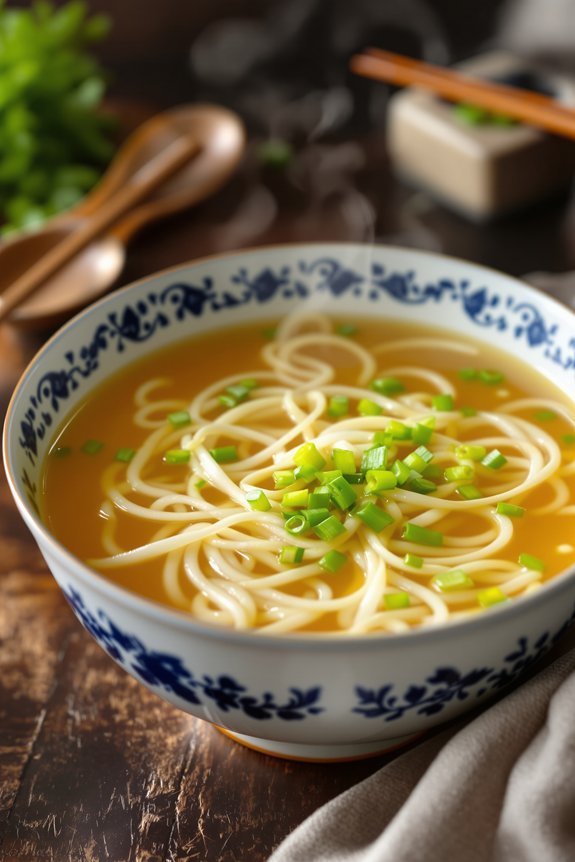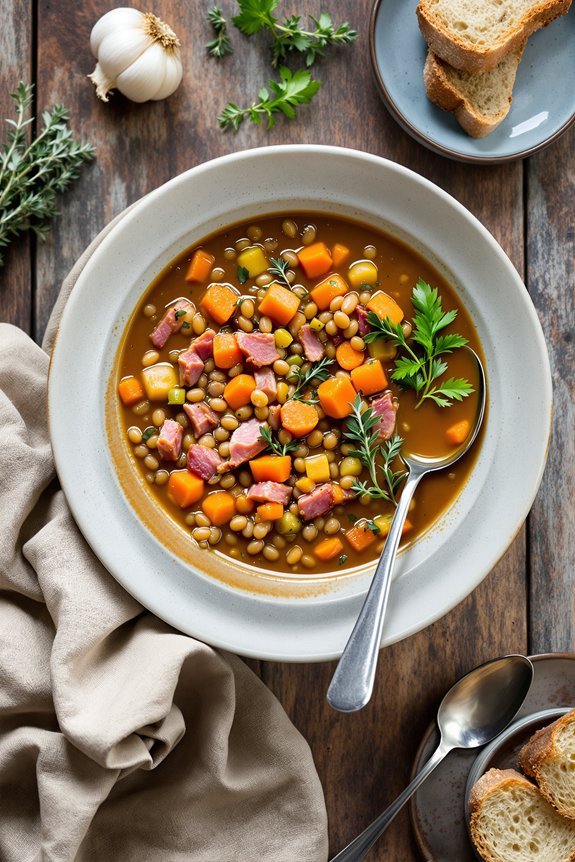Why You’ll Love this Louisiana Gumbo
When you’re craving something truly soul-satisfying, this Louisiana gumbo hits all the right notes. The rich, dark roux creates depth that store-bought versions simply can’t touch. Trust me, those 15 minutes of stirring are worth every second.
I love how versatile this recipe is—chicken, shrimp, or both? Your call. The holy trinity of bell peppers, onion, and celery brings authentic Creole flavor, while Tony Chachere’s seasoning adds that perfect kick.
And isn’t there something magical about a dish that tastes even better the next day? That’s gumbo for you. Comfort in a bowl, no passport required.
What Ingredients are in Louisiana Gumbo?
Making authentic Louisiana gumbo requires a handful of key ingredients that build those deep, soulful flavors we all crave. The foundation starts with a proper roux—that magical mixture of oil and flour that gives gumbo its signature color and richness.
From there, we layer in the “holy trinity” of Cajun cooking, plus proteins and seasonings that transform simple ingredients into something truly special.
- 1/2 cup vegetable oil
- 1/2 cup all-purpose flour
- 1 large onion, diced
- 1/2 cup chopped fresh parsley
- 1/2 cup chopped celery
- 1/2 cup chopped green bell pepper
- 1/2 cup chopped red bell pepper
- 1/2 cup sliced scallion
- 6 cloves minced garlic
- 4 cups chicken broth
- 1 teaspoon salt
- 1 teaspoon creole seasoning (Tony Chachere’s)
- 2 pounds of protein (shrimp or chicken)
What’s wonderful about gumbo is how flexible it can be with proteins. Some folks swear by adding andouille sausage alongside the shrimp or chicken, while others might throw in some oysters or crab for a seafood-forward version.
And let’s talk about the okra situation—some consider it essential, others (like me) might politely describe it as optional. Remember, the freshest ingredients will always give you the most authentic flavor, but don’t stress if you need to substitute here and there.
How to Make this Louisiana Gumbo
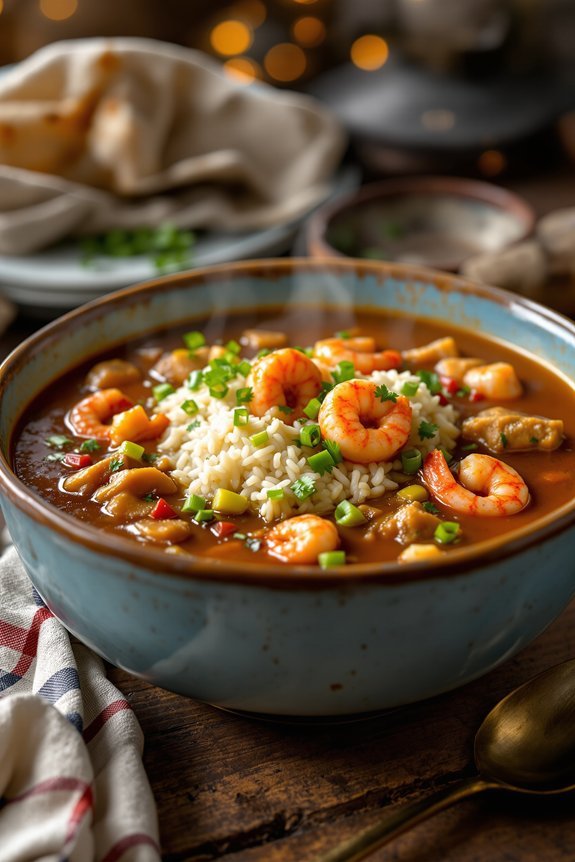
Making gumbo starts with creating a proper roux, which might sound fancy but is actually just a mixture of fat and flour cooked until it develops deep flavor. In a large stockpot, combine 1/2 cup vegetable oil and 1/2 cup all-purpose flour, then cook over medium-high heat for about 15 minutes.
This part requires patience and attention—you’ll need to stir almost constantly as the mixture transforms from pale to very dark brown, almost between brown and black. This roux is the heart and soul of your gumbo, giving it that distinctive rich flavor and silky texture. Think of it as meditation with a wooden spoon.
Once your roux reaches that perfect chocolate color, it’s time to add the vegetables. Toss in 1 large diced onion, 1/2 cup chopped fresh parsley, 1/2 cup chopped celery, 1/2 cup each of chopped green and red bell peppers, 1/2 cup sliced scallion, and 6 cloves of minced garlic.
Cook these aromatics for about 10 more minutes until they’re tender, stirring regularly so nothing burns. The kitchen will smell absolutely heavenly at this point.
Next, pour in 4 cups of chicken broth, 1 teaspoon salt, and 1 teaspoon of creole seasoning (Tony Chachere’s is traditional). Cover the pot and let everything simmer for about 15 minutes, giving it an occasional stir.
Now comes the protein—add your 2 pounds of shrimp or chicken and cook until done. With chicken, that’s about 20 minutes, while shrimp only needs a few minutes until it turns pink.
Serve this glorious concoction over rice, and you’ve got yourself an authentic taste of Louisiana.
Louisiana Gumbo Substitutions and Variations
Although traditional Louisiana gumbo has specific ingredients, the beauty of this dish lies in its flexibility and adaptability to what you have on hand.
I can’t imagine anything more forgiving than gumbo when it comes to substitutions.
No shrimp? Try chicken thighs, andouille sausage, or even duck.
Vegetarians might swap in mushrooms and extra okra for heartiness.
For the roux, butter works instead of oil in a pinch.
No bell peppers? Poblanos add a nice kick.
Gluten-free folks can use rice flour for the roux.
The soul of gumbo remains intact with these swaps—it’s all about that deep, rich flavor profile.
What to Serve with Louisiana Gumbo
Three classic accompaniments elevate every bowl of Louisiana gumbo from delicious to unforgettable.
First, a scoop of fluffy white rice is non-negotiable—it soaks up that rich, dark roux beautifully. I can’t imagine gumbo without it.
Second, crusty French bread with a generous smear of butter. Perfect for dipping into that savory broth and cleaning your bowl when no one’s looking.
Finally, a side of crisp, vinegary coleslaw provides the ideal palate-cleansing contrast to the gumbo’s richness.
The cool crunch against warm spice? Heaven on a plate.
Final Thoughts
When you master this Louisiana gumbo recipe, you’ve got more than just dinner—you’ve captured a piece of Southern culinary heritage.
That dark roux, simmering with bell peppers, onions, and celery, creates magic in your kitchen that’s been perfected over generations.
I love how gumbo welcomes adaptation. Shrimp or chicken? Both work beautifully.
Can’t stand okra? Leave it out, no judgment here. The soul of gumbo remains in that rich, patient roux and the trinity of vegetables that follows.

